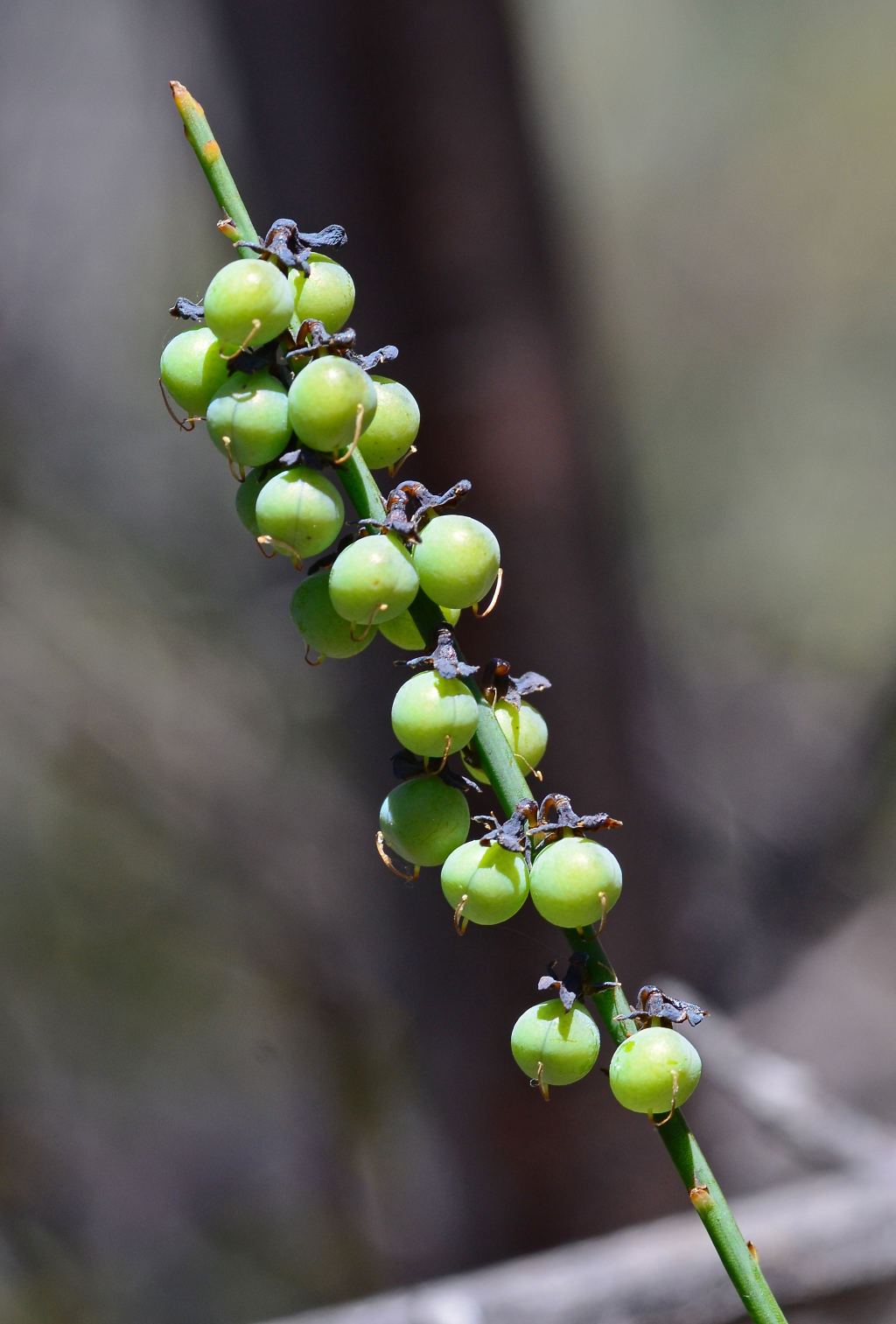Sphaerolobium minus
Labill. Globe-peaErect rush-like shrub, to c. 0.5 m tall; stems terete, faintly ribbed, glabrous; branchlets few, long, ascending, usually not forked at tips. Leaves, when present, linear-lanceolate, to c. 5 mm long, scattered; stipules absent. Flowers usually 2 or 3, clustered together forming long terminal racemes; peduncle to c. 0.5 mm long, produced into a subulate tip between flowers; pedicel 1–3 mm long; bracts obovate, c. 1 mm long; bracteoles obovate, 1.5–3 mm long, lead-grey, inserted below calyx. Calyx 3–4 mm long, lead-grey, more or less glabrous, teeth imbricate, unequal, longer than tube, upper lip cuneate, lower lobes subulate; petals yellow with reddish markings; standard broadly obovate, emarginate, 5–6 mm long, yellow, suffused red; wings equal to keel; keel obtuse, about the same length as wings; style wing much longer than broad, more than one-quarter the length of style. Pod globose, 3–5 mm diam., turgid, long-stipitate; seeds 1–2, c. 2 mm long, sometimes mottled. Flowers Sep.–Dec.
LoM, Wim, GleP, Brid, VVP, GipP, OtP, WaP, Gold, CVU, GGr, DunT, EGL, EGU, WPro, HSF. Also SA, Qld, NSW, ACT, Tas. Scattered mainly across higher rainfall parts of southern Victoria in sclerophyll forests, woodlands and heathlands.
Sphaerolobium minus sometimes grows sympatrically with S. vimineum, but is apparently more common and widespread in the eastern States.
Jeanes, J.A. (1996). Fabaceae. In: Walsh, N.G.; Entwisle, T.J., Flora of Victoria Vol. 3, Dicotyledons Winteraceae to Myrtaceae, pp. 663–829. Inkata Press, Melbourne.
 Spinning
Spinning

